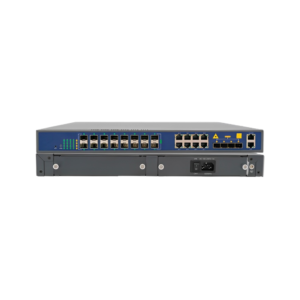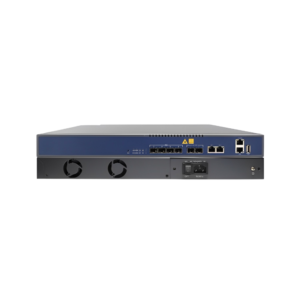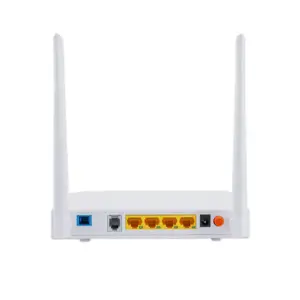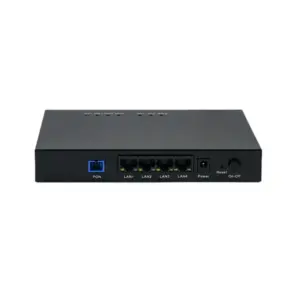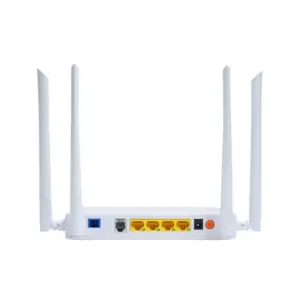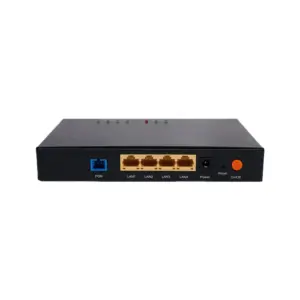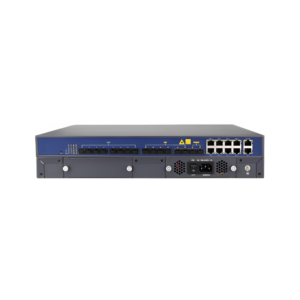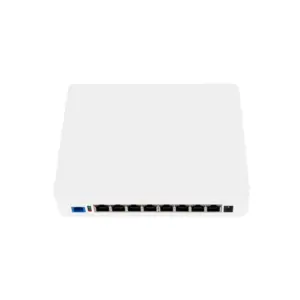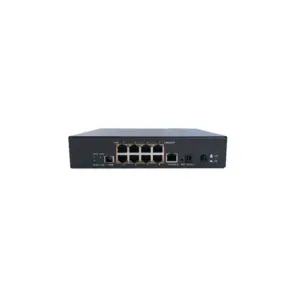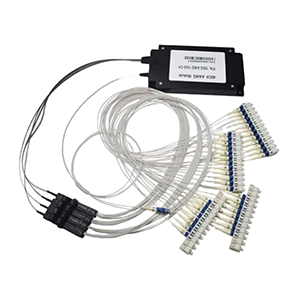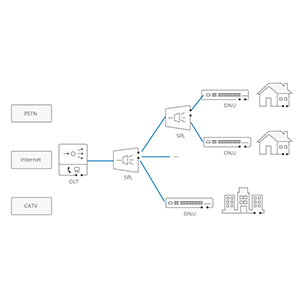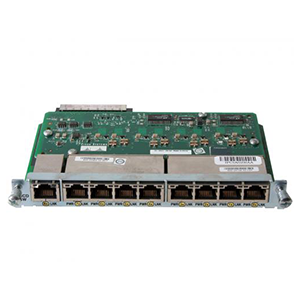Thank you for choosing to read this article. Today GracyFiber will introduce you to G-PON technology and its important role in optical fiber communications. G-PON is a Passive Optical Network (PON) technology that has outstanding performance in providing high-speed, bidirectional data transmission and shared optical fiber network resources, and is widely used in various communication fields.
Overview of G-PON
G-PON (Gigabit Passive Optical Network) is an optical fiber communication technology used to achieve high-speed broadband access. It is a type of Passive Optical Network (PON) technology that uses optical fiber as the transmission medium to transmit data to the end user’s home, office or other location.
G-PON plays an important role in optical fiber communications. It is based on the optical fiber network architecture and utilizes the high-bandwidth characteristics of light to achieve high-speed and stable data transmission. G-PON simultaneously supports point-to-multipoint data transmission by dividing the transmission link into uplink and downlink channels. In G-PON, optical signals are sent from the central office (OLT, Optical Line Terminal) to the end user’s optical network unit (ONU, Optical Network Unit) through optical fibers.
The importance of G-PON is reflected in the following aspects:
-
High-speed broadband access: G-PON provides a transmission rate of up to 1 Gbps (total uplink and downlink bandwidth) to meet the growing demand for broadband. It can support high-definition video, online games, cloud computing and other bandwidth-intensive applications, providing users with a fast Internet access experience.
-
Shared transmission: G-PON adopts a one-to-many transmission method, with multiple users sharing one optical fiber link. This shared transmission method significantly reduces network construction and operating costs and improves the utilization of network resources. By using optical division multiplexing technology, G-PON achieves efficient multi-user access.
-
Flexibility and scalability: G-PON supports multiple access technologies and protocols, such as Ethernet, ATM and TDM. It has high flexibility and scalability and can adapt to different network requirements and application scenarios. At the same time, G-PON also supports distributing signals to multiple users through optical fiber passive distributors (ODN, Optical Distribution Network), making network deployment more simplified and flexible.
-
Environmental protection and energy efficiency: G-PON uses passive optical fiber distributors, eliminating the need to use electrically driven equipment for signal distribution. Compared with traditional cable networks, G-PON is more energy-saving and environmentally friendly in terms of energy consumption and environmental impact.
G-PON has a wide range of application scenarios, and is especially suitable for broadband access in cities and suburbs, fiber optic network deployment by telecom operators, enterprise networks, and campus networks. It provides high-speed, stable and reliable data transmission, meets the needs of different users for broadband access, and promotes the development and popularization of optical fiber communication technology.
How G-PON works
The basic working principle of G-PON (Gigabit Passive Optical Network) involves processes such as optical fiber transmission, photoelectric conversion, and signal scheduling. The following is an introduction to the working principle of G-PON:
-
Optical fiber transmission: G-PON uses optical fiber as the transmission medium. The central office (OLT) sends optical signals through optical fiber to the end user’s optical network unit (ONU). Optical fiber has the characteristics of low loss and high bandwidth, and can transmit optical signals over long distances while maintaining signal quality.
-
Optical-to-electrical conversion: At the end user, the optical network unit (ONU) converts the received optical signal into an electrical signal. This process involves photoelectric converters, also known as fiber optic transceivers (SFP, Small Form-factor Pluggable). Fiber optic transceivers convert optical signals into electrical signals so that end devices (such as computers, routers, etc.) can process and use these signals.
-
Signal scheduling: G-PON realizes two-way data transmission. In the downstream direction, the central office (OLT) sends data and control signals through optical fiber to the end user’s optical network unit (ONU). These downlink signals are shared by multiple end users, but each end user only receives data related to itself. In the upstream direction, the end user’s optical network unit (ONU) sends data and control signals over optical fiber back to the central office (OLT). These uplink signals are scheduled by optical division multiplexing technology to ensure that signals from different end users do not conflict.
-
High-speed, two-way data transmission: G-PON realizes high-speed data transmission. In the downstream direction, the central office (OLT) can provide up to 2.5 Gbps of total bandwidth, which is shared by multiple end users. Each end user can receive up to 1 Gbps of bandwidth. In the upstream direction, each end user can be provided with up to 1.25 Gbps of bandwidth. This two-way high-speed data transmission meets users’ needs for broadband access.
-
Sharing optical fiber network resources: G-PON adopts a one-to-many transmission method, and multiple end users share an optical fiber link. The central office (OLT) sends the downlink signal to the optical network unit (ONU) through the optical fiber, and then the optical network unit (ONU) sends the uplink signal back to the central office (OLT) through the optical fiber. This way of sharing optical fiber network resources reduces network construction and operating costs and improves the utilization of network resources.
Technical specifications of G-PON
The technical specifications of G-PON (Gigabit Passive Optical Network) involve parameters such as transmission rate, wavelength, and splitting ratio. Below is a discussion of these technical specifications and their impact on fiber transmission capacity and quality of service:
-
Transmission rate: The transmission rate of G-PON refers to the data transmission speed on the optical fiber link. The downlink transmission rate of G-PON can reach 2.5 Gbps, while the uplink transmission rate can reach 1.25 Gbps. Such high-speed transmission capabilities meet users’ needs for high-bandwidth applications, such as high-definition video, online games, and cloud computing. Higher transfer rates can provide faster download speeds and lower latency, improving users’ network experience.
-
Wavelength: G-PON uses different wavelengths to transmit downlink and uplink signals. Typically, the downlink signal of G-PON is transmitted using a wavelength of 1490 nanometers (nm), while the uplink signal is transmitted using a wavelength of 1310 nanometers (nm). The use of different wavelengths allows downlink and uplink signals to be transmitted independently in the optical fiber, avoiding signal interference and collisions. At the same time, G-PON also uses a special wavelength (1550 nanometers) to transmit management and control signals between the optical network unit (ONU) and the central office (OLT).
-
Splitting ratio: Splitting ratio refers to the proportion of optical signals on the optical fiber link distributed to different end users. In G-PON, optical signals are sent from the central office (OLT) to the optical network unit (ONU), and then distributed to different end users through optical division multiplexing technology. The splitting ratio here represents the ratio between the optical signal power received by each end user and the total optical signal power. The common G-PON splitting ratio is 1:32, that is, one optical signal can be distributed to up to 32 end users. The choice of splitting ratio needs to take into account the balance between the number of users, network capacity and service quality. A higher splitting ratio can support more user access, but may lead to signal attenuation and reduced service quality.
Advantages and application scenarios of G-PON
G-PON (Gigabit Passive Optical Network) has the following advantages compared to other optical fiber access technologies, including high bandwidth, large capacity and low cost:
-
High bandwidth: G-PON provides high-speed data transmission capabilities, with a downlink transmission rate of up to 2.5 Gbps and an uplink transmission rate of 1.25 Gbps. This high bandwidth can meet users’ needs for broadband applications such as high-definition video, online games, and cloud computing. Users can enjoy faster download speeds and lower latency, improving the network experience.
-
Large capacity: G-PON’s optical fiber link has a large transmission capacity. Through optical division multiplexing technology, one optical fiber link can serve multiple end users at the same time, realizing resource sharing and efficient utilization. This large-capacity feature makes G-PON suitable for large-scale user access scenarios, such as residential communities, enterprise campuses, and business centers.
-
Low cost: Compared with traditional symmetrical optical fiber access technology, the deployment and maintenance costs of G-PON are relatively low. Since G-PON adopts a one-to-many transmission method, multiple end users share a fiber link, reducing the usage of fiber and equipment investment costs. In addition, G-PON’s passive components (such as splitters and couplers) do not require a power supply, reducing energy consumption and operation and maintenance costs.
G-PON has a wide range of application scenarios in multiple fields, including:
-
Home broadband access: G-PON is an ideal choice for home broadband access. It provides high-speed data transmission and can meet the needs of home users for applications such as high-definition video, online games, and smart home. At the same time, G-PON’s large capacity and shared optical fiber resource features allow multiple home users to share an optical fiber link, reducing network construction and operating costs.
-
Enterprise network: G-PON is also widely used in enterprise networks. Enterprises can take advantage of the high bandwidth and large capacity provided by G-PON to meet the growing data transmission needs. G-PON also supports multiple service access, such as data, voice and video, providing comprehensive network services for enterprises.
-
Mobile communication base stations: G-PON can be used in the post-transmission network of mobile communication base stations. Mobile communication base stations require a large amount of transmission bandwidth to support the rapid growth of mobile data services. G-PON provides high-speed transmission capabilities and large-capacity bandwidth, which can meet the data transmission needs between base stations and provide mobile operators with reliable network connections.
G-PON network architecture
The network architecture of G-PON (Gigabit Passive Optical Network) consists of three main components: OLT (Optical Line Terminal), ONU (Optical Network Unit) and ODN (Optical Distribution Network). The function of each component and its role in the optical network is explained below:
OLT (Optical Line Terminal):
- Function: OLT is the central node of the G-PON network and is usually deployed in the Central Office or data center. It is responsible for controlling and managing the entire G-PON network, including optical signal transmission and reception, user authentication, bandwidth allocation, network management and other functions.
- Function: Establish an optical fiber link between OLT and ONU, and connect multiple ONUs through a single optical fiber. The OLT converts data and control signals into optical signals, sends them to the ONU, and receives uplink data from the ONU. The OLT is also responsible for monitoring and managing the entire network to ensure the normal operation of the network.
ONU (Optical Network Unit):
- Function: ONU is a terminal device in the G-PON network, deployed in the user’s residential area or inside the enterprise. Each user or terminal device is connected to an independent ONU. ONU is responsible for analyzing optical signals, converting them into electrical signals, and providing data, voice, video and other services to users. The ONU is also responsible for collecting and sending uplink data to the OLT, while communicating with the OLT for bandwidth allocation and network management.
- Function: ONU serves as the user’s access point, converts optical signals into usable data signals, and transmits them to user equipment. It is also responsible for transmitting the uplink data generated by users back to the OLT to achieve two-way data communication. Each ONU has a unique identifier to ensure the correct transmission of data and the identification of the target terminal.
ODN (Optical Distribution Network):
- Function: ODN is an optical fiber distribution network used to transmit optical signals between OLT and ONU. It consists of optical fiber, optical splitter, coupler and connector. Optical splitters are used to distribute optical signals from OLT to multiple ONUs, while couplers are used to aggregate upstream data from multiple ONUs to OLTs. The design and layout of ODN determines the topology of the optical fiber link and the quality of signal transmission.
- Role: ODN undertakes the important task of transmitting optical signals in the G-PON network. It guides the optical signal from the OLT to each ONU, and at the same time collects and aggregates the uplink data from each ONU. The design of ODN needs to consider factors such as fiber length, optical splitting ratio, fiber connection and distribution point installation to ensure signal transmission quality and network reliability.
These components together constitute the network architecture of G-PON. The OLT serves as the central node to control and manage the entire network, the ONU serves as the user’s access point to provide data and services, and the ODN is responsible for transmitting optical signals on the optical fiber link. This distributed architecture enables G-PON to achieve high-speed, stable and reliable optical fiber access and meet user requirements for high bandwidth and large capacity.
G-PON deployment and management recommendations
Deploying and managing a G-PON network requires consideration of multiple aspects, including fiber access point selection, fiber cabling and equipment configuration, as well as performance monitoring, troubleshooting and security management. Here are some suggestions and best practices:
Deployment guidance:
- Optical fiber access point selection: Select the appropriate fiber access point location according to user needs and network scale, such as central office, data center or user building. Ensure that the access point is close to the user equipment to reduce signal attenuation and transmission delay.
- Fiber optic cabling: When performing fiber optic cabling, follow the bending radius and installation standards of the fiber to avoid bending the fiber and excessive tension. Use high-quality optical fibers and connectors to ensure signal transmission quality.
- Equipment configuration: Correctly configure the parameters of OLT and ONU, including bandwidth allocation, QoS (Quality of Service) settings and authentication mechanism. Carry out reasonable bandwidth allocation and service quality control according to network needs and user types.
Management suggestions:
- Performance monitoring: Regularly monitor the performance indicators of the G-PON network, including bandwidth utilization, transmission delay, packet loss rate, etc. Use a network management system (NMS) or monitoring tool to monitor and Analyze network conditions to identify and resolve performance issues promptly.
- Troubleshooting: Establish troubleshooting processes and strategies, including fault location, fault recovery and fault recording, etc. Train network operation and maintenance personnel to familiarize them with common fault troubleshooting methods, and establish close cooperation with suppliers to obtain technical support and timely fault repair.
- Security management: Take necessary security measures to protect the G-PON network from potential threats and attacks. This includes using strong passwords for device authentication, restricting physical access, implementing security policies such as network isolation and firewalls, and performing regular vulnerability scans and updating devices with security patches.
In addition, regular network maintenance and upgrades are key to maintaining stable operation of the G-PON network. Maintain close collaboration and communication with vendors to stay abreast of the latest technology developments and updates to maintain network performance and security.
Summarize:
Through best practices such as performance monitoring, troubleshooting, and security management, you can optimize the performance of G-PON and ensure that users receive an excellent network experience. If you are interested in G-PON technology and related products, please consider contacting us, We will provide you with professional advice and support to help you choose the G-PON solution that suits your needs and achieve high-speed, reliable fiber optic communications.
- What is GPON technology?
- What is the difference between PON and GPON?
- What is the difference between router and GPON?
- What is the difference between GPON and ONU?
- Is GPON better than fiber?
- What is the difference between GPON and FTTH?
- What is better EPON or GPON?
- Is GPON better than Ethernet?
- How the GPON will work?


